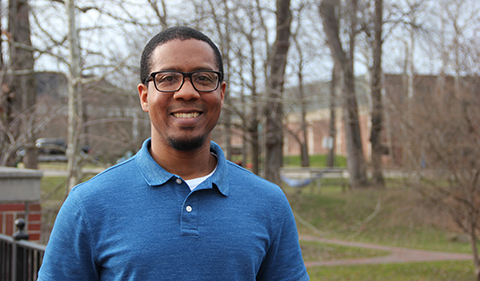By Ling Xin
NQPI Editorial Intern
Nanoscale and Quantum Phenomena Institute Spring 2020 Newsletter
A team led by Ohio University chemist and NQPI member Dr. Travis White is working to advance the understanding of the basic processes involving copper photosensitizers to drive chemical reactions, which can shed light on efficient, economic, and stable renewable energy solutions for the future.
Photosensitizers, which absorb energy from light and use that energy to initiate chemical reactions, have attracted much attention as an alternative to mitigate dependence on non-renewable fossil fuels. However, they are traditionally made of rare earth metals such as ruthenium and iridium, which are scarce and expensive.
White and his team have pursued a different approach by using more earth-abundant elements, such as copper, to develop cheaper versions of photosensitizers. In a recent paper published in ACS Applied Energy Materials, they reported new observations about the fundamental process of copper photosensitization in solutions. Specifically, they studied how to select and design electron donors that facilitate electron transfer following light absorption by the copper photosensitizers. Their work provides insight into the factors that affect the rate of electron transfer from the donor to the copper photosensitizers, an important step in ultimately producing a fuel like hydrogen gas.
The published work is the third paper resulting from his copper photosensitizer research supported by OHIO startup funding, said White, who joined Ohio University in 2016 and became an NQPI member in 2019. His team’s next goal is to upgrade the experiments from a solution to a device, getting one step closer to the implementation of more affordable photosensitizers.




















Comments